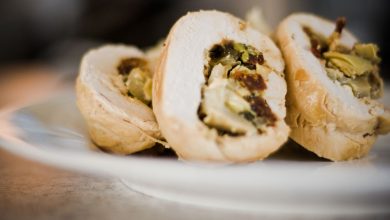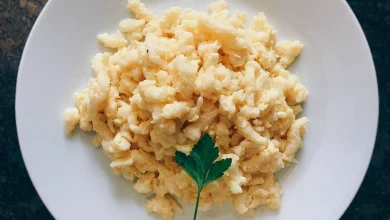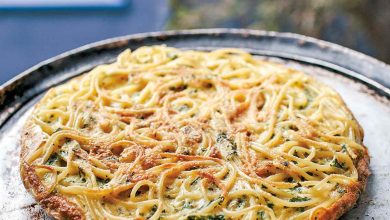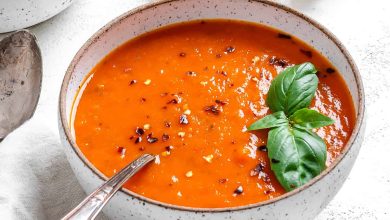Introduction
Homemade almost unsweetened applesauce stands as a testament to the art of simple, wholesome cooking. This delightful fruit purée embodies the natural sweetness of apples, accentuated by a hint of acidity from lemon juice, and minimally altered by added sugars. Its rich history traces back centuries, echoing the timeless appeal of this versatile fruit across cultures and continents. The beauty of this applesauce lies not only in its health benefits but also in its adaptability—serving as a nutritious snack, a topping for breakfast dishes, or an ingredient in baked goods and savory recipes.
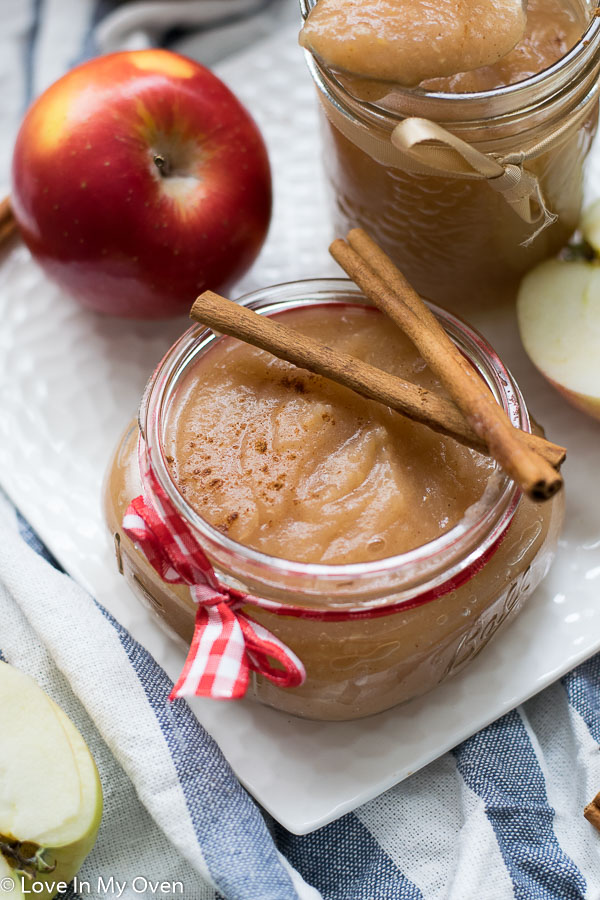
At Love With Recipes, our goal is to guide you through creating a batch of applesauce that retains the authentic flavors of fresh apples with minimal processing. By understanding the origins, components, and meticulous preparation techniques, you can craft your own delicious, health-conscious applesauce, perfectly tailored to your taste preferences and dietary needs. This comprehensive guide will delve into every aspect—from history and nutritional content to detailed step-by-step instructions—empowering you to master the craft of homemade applesauce with confidence and culinary finesse.
Time
Preparing almost unsweetened applesauce is a straightforward process that typically requires around 40 to 50 minutes from start to finish. The breakdown is as follows:
- Preparation Time: 10-15 minutes
- Cooking Time: 20-25 minutes
- Mashing and Adjusting: 5-10 minutes
- Cooling and Storage: 5-10 minutes
In total, expect to spend approximately 45 minutes to 1 hour to produce a fresh batch of homemade almost unsweetened applesauce. This quick turnaround makes it an excellent choice for both weeknight dinners and weekend meal prep.
Needed Equipment
Essential Kitchen Tools
| Equipment | Purpose |
|---|---|
| Large Saucepan or Heavy-bottomed Pot | For cooking the apples evenly and preventing burning or sticking. |
| Peeler or Paring Knife | To peel the apples, removing the skin for a smoother texture, if desired. |
| Core Remover or Paring Knife | To core the apples, removing the seeds and stem area efficiently. |
| Cutting Board | Provides a stable surface for peeling, coring, and chopping apples. |
| Measuring Cups and Spoons | For precise measurement of water, lemon juice, and optional sweeteners. |
| Wooden Spoon or Silicone Spatula | To stir the apples during cooking, preventing sticking and ensuring even cooking. |
| Immersion Blender or Potato Masher | For mashing the cooked apples to your preferred consistency. An immersion blender creates a smoother texture, while a potato masher yields a chunkier result. |
| Ladle or Slotted Spoon | To transfer hot applesauce into storage containers safely. |
| Storage Containers or Glass Jars | For storing the finished applesauce in the refrigerator or freezer. |
| Optional: Food Processor | An alternative to immersion blender for pureeing the applesauce if a more refined texture is desired. |
| Timer | To keep track of cooking and simmering durations accurately. |
Tags
Healthy, Homemade, Apples, Fruit, Snack, Natural, No Added Sugar, Low Sugar, Preserves, Whole Food, Plant-Based, Vegetarian, Vegan, Gluten-Free, Dairy-Free, Nut-Free, Kid-Friendly, Quick & Easy
Serving Size
A typical serving size of homemade applesauce is 1/2 cup. This portion provides a satisfying balance of flavor and nutrition, suitable for snacking, topping, or ingredient use in recipes.
Difficulty Level
This recipe is classified as easy and suitable for beginner cooks. It requires basic knife skills, familiarity with stovetop cooking, and minimal equipment, making it accessible for all skill levels.
Allergen Information
- Allergen-Free: This applesauce is naturally free from common allergens such as dairy, eggs, nuts, soy, and wheat.
- Cross-Contamination: Ensure all equipment and utensils are thoroughly cleaned if preparing in a shared kitchen to avoid cross-contact with allergens.
Dietary Preference
- Vegan
- Vegetarian
- Paleo
- Whole30 (if no added sweeteners)
- Gluten-Free
Course
Side dish, Snack, Breakfast Topping, Ingredient
Cuisine
American, European, Global
Ingredients
| Ingredient | Quantity | Notes |
|---|---|---|
| Fresh Apples (preferably Granny Smith, Fuji, McIntosh) | 2 pounds (about 4-5 medium apples) | Choose firm, ripe apples for the best flavor and texture |
| Water | 1/4 cup per pound of apples | Adjust based on desired consistency |
| Lemon Juice | 1 tablespoon | Freshly squeezed for optimal flavor and preservation |
| Sugar or Sweetener (optional) | Start with 1 tablespoon | Adjust to taste; use honey, maple syrup, or stevia if preferred |
| Optional Spices (cinnamon, nutmeg) | A pinch | For added flavor, though not traditional in almost unsweetened versions |
Instructions
Step 1: Preparing the Apples
Begin by selecting high-quality, fresh apples. Rinse them thoroughly under cold running water to remove any dirt, wax, or residues. Use a peeler or paring knife to peel the apples if you prefer a smoother applesauce free of skin. Alternatively, leaving the skin on can add extra fiber and nutrients, resulting in a slightly chunkier texture.
Core the apples using a corer or carefully with a paring knife, removing all seeds and the tough core. Cut the apples into uniform small chunks—about 1-inch pieces—to ensure even cooking. Consistent sizing helps prevent uneven softness, which is crucial for achieving the perfect texture.
Step 2: Cooking the Apples
Transfer the chopped apples into a large saucepan or heavy-bottomed pot. Add the measured water—about 1/4 cup per pound of apples—to facilitate steaming and prevent burning. Squeeze in the lemon juice, which acts as a natural preservative and adds a subtle tang that complements the apples’ natural flavor.
Place the pot over medium heat and bring the mixture to a gentle simmer. Cover the pot with a lid to trap steam and accelerate the cooking process. Stir occasionally with a wooden spoon or silicone spatula to prevent sticking at the bottom and ensure uniform cooking.
Cook until the apples are tender and easily mashable—usually about 15-20 minutes. You can test for doneness by piercing a piece with a fork; it should slide in easily without resistance.
Step 3: Mashing and Adjusting
Once cooked, remove the apples from heat. Use an immersion blender directly in the pot to puree the apples until smooth, or transfer the cooked apples to a food processor or blender. Alternatively, for a chunkier texture, use a potato masher and mash the apples to your preferred consistency.
At this stage, taste the applesauce. If desired, add a small amount of sweetener—start with a tablespoon—and stir well to incorporate. Continue to simmer the applesauce over low heat for an additional 3-5 minutes to meld flavors and achieve the desired thickness.
Step 4: Final Touches and Cooling
Allow the applesauce to cool slightly before transferring it to sterilized storage containers or jars. This step prevents condensation and preserves quality. You can enjoy the applesauce immediately or refrigerate for up to a week. For longer storage, freeze in portioned containers or freezer bags for up to 3 months.
Preparation Tips
- Choose the right apples: For a balanced flavor, mix tart and sweet apples—such as Granny Smith and Fuji—to create a nuanced taste.
- Peeling apples: While peeling results in a smoother applesauce, leaving the skin on increases fiber and nutrients, and adds a rustic texture.
- Cook in batches: Prepare larger quantities and store in jars or freezer bags for convenience.
- Adjust water levels: Add more water if the apples are particularly juicy or if you prefer a thinner consistency.
- Sweetener options: Use natural sweeteners like honey, maple syrup, or stevia for a healthier alternative to refined sugar.
- Flavor enhancements: While traditional almost unsweetened applesauce is simple, a pinch of cinnamon or nutmeg can add depth—use sparingly to maintain the minimal-sugar profile.
Nutritional Information
| Nutrient | Per 1/2 Cup Serving |
|---|---|
| Calories | Approximately 50-70 kcal |
| Total Fat | Negligible (less than 1g) |
| Sodium | Less than 5mg |
| Total Carbohydrates | About 14-15g |
| Sugars | Approximately 10-12g (naturally occurring in apples) |
| Dietary Fiber | 2-3g |
| Protein | Less than 1g |
| Vitamin C | Provides about 4-6mg, depending on apple variety |
| Potassium | About 100-150mg |
Tips and Tricks
- Use ripe, firm apples: Ripe apples yield the best flavor and texture, and cook evenly.
- Pre-soak apples in lemon water: To prevent browning if peeling in advance, soak peeled apples in lemon water until ready to cook.
- Adjust consistency: For a chunkier applesauce, mash less; for smooth, blend longer or process in a food processor.
- Sweeten sparingly: Remember, minimal added sugars highlight the natural apple flavor.
- Experiment with spice: A pinch of cinnamon or vanilla extract can add flavor without extra sugar.
- Reheat leftovers properly: Gently warm refrigerated applesauce before serving to enhance flavor and texture.
Add-ons
- Chopped nuts (walnuts, pecans) for added crunch
- Fresh berries or dried fruits for variation
- A splash of vanilla or almond extract for aromatic nuances
- Spices such as cinnamon, nutmeg, or allspice for flavor depth
Side Dishes and Recipes Using Applesauce
- Oatmeal or porridge topping
- Yogurt or cottage cheese accompaniment
- In baked goods: muffins, cakes, or bread
- As a natural sweetener in smoothies
- In pork or poultry marinades for added moisture and flavor
Improvements and Variations
- Spiced applesauce: Add cinnamon and a touch of nutmeg during cooking for a warm, seasonal flavor.
- Sweetened version: Incorporate natural sweeteners for children or those preferring sweeter applesauce.
- Chunky applesauce: Mash less for a hearty texture, ideal for topping oatmeal or yogurt.
- Pureed applesauce with added zest: Blend in lemon or orange zest for a citrusy twist.
Save and Store
Proper storage ensures your applesauce maintains its freshness and flavor. Store in airtight containers in the refrigerator for up to 7 days. For longer storage, freeze in freezer-safe containers or zip-top bags, leaving some space for expansion. Label with date to keep track of freshness. Thaw in the refrigerator or gently reheat on the stovetop before serving.
FAQ
Can I make applesauce without peeling the apples?
Yes, leaving the peel on adds fiber and nutrients, resulting in a chunkier texture. Just wash the apples thoroughly and consider processing the cooked apples in a food processor for a smoother consistency.
How do I prevent applesauce from browning?
Adding lemon juice during cooking or immediately after peeling helps prevent browning. Storing applesauce in airtight containers also minimizes oxidation.
Can I sweeten applesauce naturally?
Absolutely. Use honey, maple syrup, agave nectar, or stevia. Keep added sugars minimal to preserve the health benefits and natural flavor.
What varieties of apples are best for applesauce?
Balance tartness and sweetness with varieties like Granny Smith, Fuji, McIntosh, or Gala. Mixing varieties can create a more complex flavor profile.
Is homemade applesauce safe for babies?
Yes, especially if made without added sugars or spices. Ensure apples are cooked thoroughly and mashed smooth for easy digestion.
Conclusion
Crafting your own almost unsweetened applesauce is a rewarding process that combines simplicity with nutritional integrity. It allows you to enjoy the natural flavors of apples while controlling the ingredients, making it a healthier alternative to store-bought versions laden with added sugars. This versatile condiment can be incorporated into countless dishes, providing a natural sweetness and moistness that enhances both sweet and savory recipes. Whether served as a snack, a topping, or an ingredient, homemade applesauce exemplifies wholesome, mindful cooking and is a delightful addition to any kitchen repertoire.
Remember, at Love With Recipes, we believe that good food begins with fresh, quality ingredients and thoughtful preparation. So, gather your apples, embrace the process, and savor the delicious results of your homemade almost unsweetened applesauce.
References
- National Center for Home Food Preservation. (n.d.). Applesauce Processing. Retrieved from https://nchfp.uga.edu/how/can_03/applesauce.html
- Harvard T.H. Chan School of Public Health. (2021). The Nutrition Source: Apples. Retrieved from https://www.hsph.harvard.edu/nutritionsource/food-features/apples/

